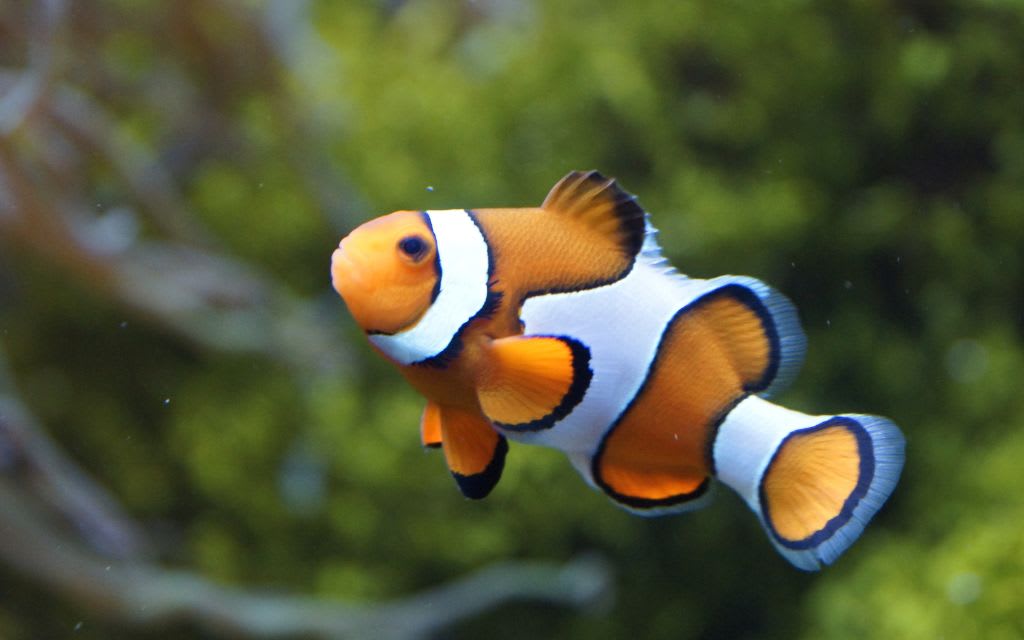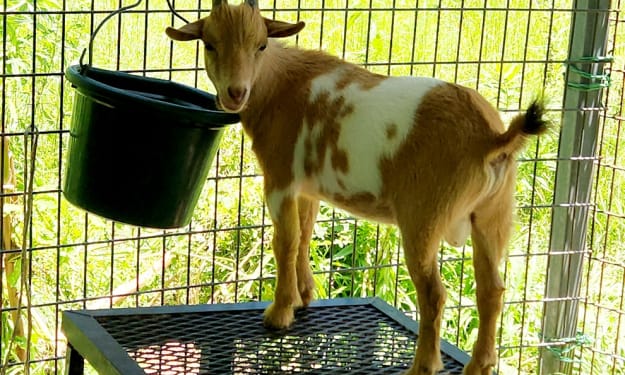
Introduction to Aquarium Fish: Types and Care Requirements
When it comes to keeping fish in an aquarium, having the right knowledge about types and care requirements is essential. Fish-keeping is an enjoyable hobby, but it requires careful attention and diligence for the health of your aquatic pets. This article explores what you need to know when getting started with aquarium fish, from different types to essential supplies.
Types of Aquarium Fish
Fish come in a wide range of shapes, sizes, colors, and temperaments. Before selecting aquarium fish for your tank, take time to research each species’ needs such as temperature tolerance, tank size requirement, compatibility with other fish species, diet preferences, etc. Some popular starter species that are hardy and easy to care for include mollies, guppies, platies, corydoras catfish, tetras (e.g., neon tetras), angelfish (for larger tanks) and gouramis.
Setting Up a Tank
Once you’ve selected your fish species of choice and know their basic needs in terms of temperature and compatibility with other fish species; you can choose a tank size accordingly. Ideally tanks should have a 20-gallon capacity or more per one adult fish; however this can vary depending on the type of fish you opt for. A few general rules when it comes to choosing a tank size is that the bigger the better – this will provide more space for swimming as well as allow more room for decorations and plants if desired. After deciding on a tank size you need to assemble the setup which includes reviewing these essential components:
- Filter: A filter helps keep the water clean by removing pollutants.
- Heater: Heaters help maintain optimal water temperatures depending on the type of fish.
- Substrate: Substrate is placed at the bottom of your aquarium for decoration purposes.
Lighting helps enhance bright colors in certain types of tropical fish.
Maintaining Water Quality
Aquariums require frequent testing of water parameters such as pH levels , ammonia levels , nitrites , nitrates , dissolved oxygen levels , temperature , etc . It's important that these parameters are tested regularly so that any abnormalities can be identified quickly . Doing regular water changes helps maintain optimal water quality while also helping prevent disease outbreaks among your aquarium inhabitants . Generally speaking , 25 % weekly water changes should be sufficient .
Caring For Your Fish
As with any pet , caring for an aquarium requires dedication , patience and diligence . Proper feeding habits are key – overfeeding can lead to excess ammonia or nitrate buildup causing poor water quality ; underfeeding can result in malnutrition . Additionally , researching into each type’s natural habitat will help create an ideal environment that promotes wellbeing . Suitable home decor such as live plants or rocks can also aid in providing natural cover areas around which your aquatic friends will feel secure . In conclusion getting started with aquarium fishes requires some thought but once all essentials are set up properly - from types of fishes selected to tanks sizes - maintaining proper care becomes easy while ensuring healthy living conditions for your pet fishes.
Setting Up Your Aquarium: Tank Size, Filtration, Heating and Lighting
When it comes to getting started and setting up an aquarium for fish, there are some important factors to consider. Fish require specific tank size, filtration, heating and lighting to ensure a healthy environment. It can seem daunting when first starting out with aquarium fish but having the right knowledge can help you achieve success.
Tank Size
When looking for a tank size, it is essential to take into account any fish you may want in the future as well as current fish that you have. The more water the better; larger tanks are typically easier to maintain than small tanks due to their increased volume which helps keep water quality more stable. A general rule of thumb is one gallon per inch of fully grown fish so if you plan on having a few larger species it is best to choose a tank that is big enough for them all.
Filtration
Filtration is an important part of any aquarium set-up and helps keep the water clean and free from toxins. There are two types of filter systems; mechanical and biological filters. Mechanical filters use physical material such as foam or sponges to capture particles from the water while biological filters use beneficial bacteria colonies to convert harmful ammonia into less toxic nitrates. It’s important that both types of filters are kept properly maintained for optimal performance and health of your fish.
Heating
The temperature of an aquarium should remain constant in order for the fish’s metabolism to function properly - this means investing in an aquarium heater if your room temperature isn't consistent enough for your needs. Most tropical species will do best in temperatures between 70°F - 80°F (21°C - 27°C).
Lighting
When choosing lighting for your aquarium it is best to use full-spectrum bulbs designed specifically for aquatic environments as these provide natural-looking light that mimics natural daylight conditions which will help bring out any vibrant colors in your fish’s scales or fins. The amount of light required depends on how heavily planted or decorated your tank is; if there are live plants present they will require more light than tanks without plants.
Choosing the Right Fish for Your Aquarium: Compatibility and Diet Considerations
When you’re first getting started with aquarium fish, it’s important to understand the basics of compatibility and diet. Not all fish will mix well together, and some may require a specialized diet. To ensure your fish are happy and healthy, it’s essential to make sure they have the right habitat and nutrition.
Every type of fish has its own unique needs. Factors like water temperature, pH levels, tank size, tank equipment, water filtration system, and other factors should be considered when selecting different types of fish to coexist in an aquarium. Proper research should be done about the particular species of fish you plan on adding to your aquarium to ensure optimal compatibility.
In addition to finding compatible species of fish for your aquarium, it’s also important to consider their dietary needs. Some freshwater fish may require a more varied diet than others; this can include live foods like insects or worms, flakes or pellets formulated specifically for that species of fish, vegetables or frozen food. It’s important to remember that not all fish can eat the same type of food; therefore you may need separate containers for each type of food if you house multiple species in one tank.
Lastly, when looking into new types of aquarium fish it's important to consider their level of care required as well as any health issues they might have. Saltwater aquariums can be much more difficult and expensive to maintain than freshwater tanks so it's good to do plenty of research before getting started with a saltwater tank setup. Additionally some types of freshwater fish may have a greater tendency towards disease which could be more costly in terms of time and money in the long run.
Caring for an aquarium full of healthy, happy fish is possible when proper considerations are taken when selecting the right compatible species with the correct diet and habitat requirements for them.
Maintaining a Healthy Aquarium Environment: Water Changes, Algae Control and Monitoring Parameters
Getting started with an aquarium can be an exciting experience for any fish enthusiast. Before taking the plunge into this rewarding hobby, it is important to understand the basic needs of your fish. To begin, you will need to consider what type of fish you want to keep and purchase an appropriate tank size. A tank that is too small can cause overcrowding and stress for your fish, while a tank that is too large creates more work in terms of maintenance and upkeep. You will also need to consider the type of environment that best suits the species you are looking to keep—either freshwater or saltwater. Once these decisions are made, it is time to move onto maintaining your aquarium environment.
One of the most important aspects of keeping a healthy aquarium environment is doing regular water changes – typically around 25-30% every two weeks. Water changes not only help maintain cleanliness within the tank but also help restore essential minerals that are needed for a healthy aquatic ecosystem. Additionally, monitoring parameters such as pH levels and nitrates help ensure your fish’s overall health and well-being.
Algae control is another important factor when it comes to maintaining a balanced aquarium environment. Excessive algae growth can clog filters and disrupt oxygen levels in the water, which could be fatal for some species of fish. To limit algae growth in your tank, make sure your lighting isn't on longer than 8–10 hours per day and keep up with regular water changes every two weeks.
Finally, you should monitor different parameters such as pH levels in order to determine whether or not there are any potential problems within your tank such as toxic chemicals or parasites. Regular testing can go a long way towards ensuring that all necessary parameters are maintained for optimal health in both freshwater and saltwater tanks.
Getting started with aquarium fish requires careful planning but with the right guidance, you will be able to create a safe and healthy environment where they can thrive! By understanding basic maintenance requirements such as doing regular water changes, controlling algae growth and monitoring parameters like pH levels, you will have everything you need to create an enjoyable experience for both yourself and your finned friends.
Common Mistakes to Avoid When Starting an Aquarium
When getting started with aquarium fish, there are some common mistakes to avoid. One of the most common mistakes is selecting the wrong type of fish for your tank. Different species of fish have different needs, and it's important to make sure that the fish you choose are compatible for your aquarium. For example, some fish require a large amount of space while others thrive in smaller tanks. Additionally, some species require saltwater while others can live in freshwater. Make sure you research each species thoroughly before making your selection so that you end up with fishes that are compatible and thrive in your environment.
Another mistake to avoid is overstocking your aquarium. Overstocking can lead to overcrowding, water pollution, and an increase in competition for food among inhabitants. Overstocked tanks can also cause stress on fish leading to illness or death. To prevent this from happening, only add a small number of new fish at once and allow them time to settle in before adding any more. It's also important not to overfeed your aquatic friends. While feeding your fish may seem like a fun part of owning an aquarium, it can be dangerous if done incorrectly. Too much food can create excess waste which will lead to ammonia and nitrite levels getting out of balance in your tank – something that could be fatal for the inhabitants! Instead, feed only what they'll eat within a few minutes each day and remove any food particles after they've finished eating.
Finally, it's important not to neglect regular maintenance of your aquarium setup when getting started with aquarium fish. This includes frequent water changes as well as cleaning any debris or algae off the walls of the tank and keeping an eye out for sick or diseased fish who need additional care or removal from the tank altogether. Without proper maintenance, toxins will quickly build up causing poor water quality and potentially damaging the health of the inhabitants. By consistently monitoring water quality parameters such as pH level and ammonia concentration you’ll ensure everything stays healthy!
About the Creator
Hasan
Welcome...
In this site of mine you can learn amazing things and many information that you don't know so please subscribe to my site.
Enjoyed the story? Support the Creator.
Subscribe for free to receive all their stories in your feed. You could also pledge your support or give them a one-off tip, letting them know you appreciate their work.






Comments
There are no comments for this story
Be the first to respond and start the conversation.